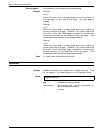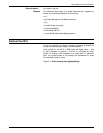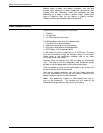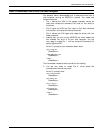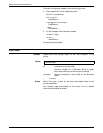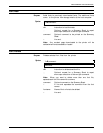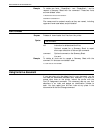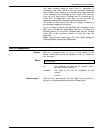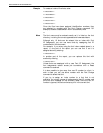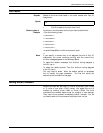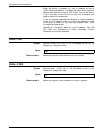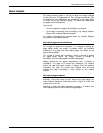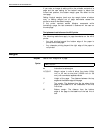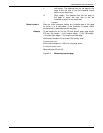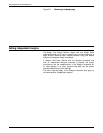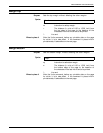
XES COMMAND LANGUAGE MODE
Example To create an index of five fonts, enter:
E
+0Classic8iso-LL
E
+1Classic8Biso-LL
E
+2Classic6iso-LL
E
+3Classic12iso-LL
E
+4Classic10iso-LL
Once the files have been assigned identification numbers, they
are selected by number with the Font Change command. For
example, to select Classic8Biso-L within a document, enter
E
1
More The font name must be entered exactly as it is listed on the font
directory, including the correct uppercase and lowercase letters.
Although only 10 fonts can be entered into an index with Font
ID Assignment, you can use more fonts by reassigning font ID
numbers within the document.
For example, if you were using the font index created above in a
report, in one part of the report you can use font 3 as it is
assigned above by entering:
E
+3Classiciso12-LL
In another part of the report, you can replace this font with
another by entering
E
+3Classic14iso-LL
Unless fonts are reassigned with a new Font ID Assignment, the
font assignments extend across job boundaries until a Reset
command is received.
It is also possible to give more than one ID number to a font; in
such a case, you can use either number with the Font Change
command to select that font.
If you try to assign an index number to a font that is not
available, the printer ignores all references to that ID number and
prints an error message on the Summary Sheet. Since the font ID
number is ignored, the text continues to print in the current font.
2-36 XEROX 4213 LASER PRINTER PROGRAMMER REFERENCE



